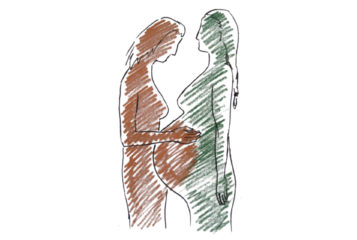Stem cells that give rise to the placenta prior to implantation have, for the first time, been generated from human tissue.
Scientists have discovered means to generate precursor stem cells which can later develop into human placental tissue, known as trophoblasts, from human induced pluripotent stem (iPS) cells. The research, carried out by a team at Washington University School of Medicine in St. Louis, Missouri, built on work previously undertaken by researchers in Japan.
'Being able to study cells of the placenta in the lab is an important advancement, because we can begin to ask very specific biological questions about pregnancy loss or other complications that have been impossible to study in the past' said co-author of the study, Dr Thorold Theunissen.
Little is understood about early placental development at a cellular level. While many researchers have studied iPS cells, they have previously been unable to generate trophoblasts. iPS cells exist once the embryo has implanted into the uterine lining. However, as the placenta starts to develop from trophoblasts even before implantation, iPS cells have already relinquished their potential to form placental tissue.
The researchers were also able to differentiate the trophoblasts further into two specific cell types. One which allows for the placental cells to invade the uterine lining, and a second which produces hormones important for maintaining a pregnancy.
These cells could be used to study miscarriages and pregnancy-related conditions such as pre-eclampsia, which results in high-blood pressure. If left untreated, this condition can have serious consequences for both mother and baby.
'We think pre-eclampsia results from inadequate invasion of trophoblast cells into the lining of the uterus and thus a failure to set up a strong enough connection - and that can result in oxygen deprivation in the embryo,' Dr Theunissen explained.
Previously, studying such cellular processes would require samples to be obtained from embryos. However, the team hope their discovery can allow future research to take place independent of such methods.
'What we have done is create a much more accessible source of these cells, independent of an embryo, so that scientists can study the placenta in ways that were not possible before,' said Dr Theunissen, 'what we would like to do now, with proper permission from patients, is study trophoblasts derived from, say, skin or blood samples from patients with pre-eclampsia or those with a history of pregnancy loss, for example.'
This study was published in the online journal, eLife.







Leave a Reply
You must be logged in to post a comment.